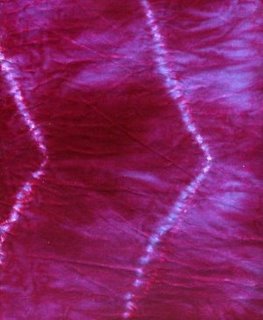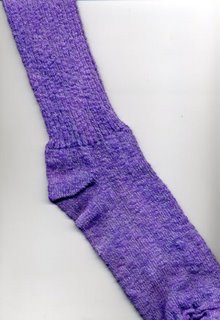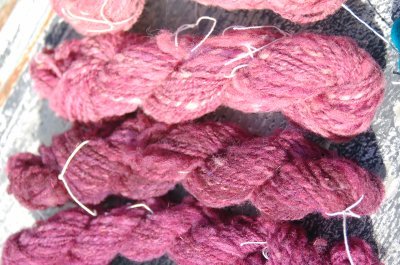I've finished the long-deferred quilt project at last! Here it is quilted but unbound. I hung it on the clothesline where I photographed it in the process of deciding whether to add a border. I decided it looked fine with no border, so I bound it with the same white muslin in the blocks.
This has been an experimental quilt from the start. It was one of my first dyeing projects, and I chose half-square triangles for piecing practice. I experimented sewing the blocks together with the serger when the serger was brand-new, and I also used the serger as part of the "quilt as you go" assembly. Below, I've listed the four websites that helped me the most in understanding how to combine assembly and quilting processes into a manageable method that doesn't involve a quilting frame or a long-arm machine. I must also add that the quilt-as-you-go technique using the serger gave me a neater, more nearly square finished project than my sad attempts at traditional quilting.
- Mama Melino's Lasagna Quilting (pdf file) is subtitled "Gotta Get It Quilted." Most of the "lasagna quilts" the search engine turns up are made of long fabric strips, but Paula Melino shows you how to turn a set of traditionally-pieced blocks into a finished quilt without ever stuffing a big roll of fabric under the arm of your sewing machine. This is where I got the idea to use the serger to assemble the quilt in big chunks. It worked really well on this project, and my quilt ended up much closer to "square" than it ever has assembling by regular sewing machine or by hand.
- Crazy Shortcut Quilts: Marguerita McManus shows you how to quilt individual blocks and then assemble them with narrow strips. This is the process I'm going to try next.
- Marianne, of "The Quilting Edge" offers photo tutorials and text instructions for her own quilt-as-you-go method. It's also a real treat to see her quilts as she builds them.
- Melody Johnson's quilt-as-you-go technique is similar to Marianne's, and her quilts are similarly inspiring.
Of course, having white thread on the serger and sewing machine inspired me to sew up these underbritches and tuck them in my lingerie drawer. More fabric scraps put to good use.






























